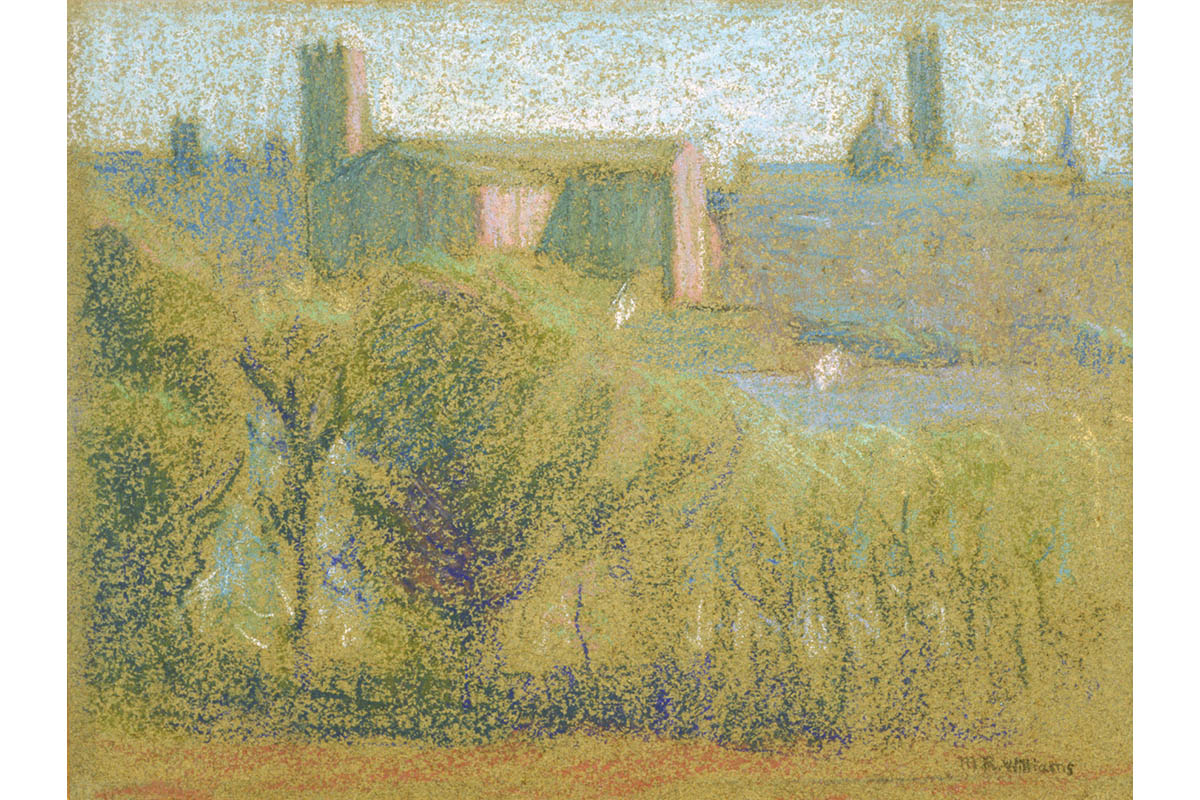
Mary Rogers Williams
Guest blogger Saraphina Masters ’17 is a Smith College student and the 2013-2015 STRIDE Scholar in the Cunningham Center for Prints, Drawings, and Photographs.
This post is part of a series about the early years of the print, drawing and photograph collection. Art by Mary Rogers Williams and other early art faculty of Smith College is on view in the Works on Paper gallery (2nd floor) until December.
While doing research on the early art faculty of Smith College for the Cunningham Center’s reinstallation of the works on paper collection, I came across Ms. Mary Rogers Williams. She wasn’t mentioned at length in any of the sources I was using, and I was given the email address of Eve Kahn, who has been researching and archiving Mary's letters. Provided with a massive amount of information about this fascinating woman, who was an integral part of the development of Smith’s art department, I felt compelled to share her story and her work.
Mary Rogers Williams was born on September 30th, 1857 to a successful baker in Hartford, Connecticut. Orphaned by the age of 14, Mary nonetheless went on to study art at the Art Students League and Hartford's Art Society. Her early mentor was James Wells Champney, the first professor of art at Smith College. In 1888, she came to work at the same institution. At Smith, Mary taught studio classes as well as worked in the college’s burgeoning gallery alongside Dwight William Tryon, the first director.
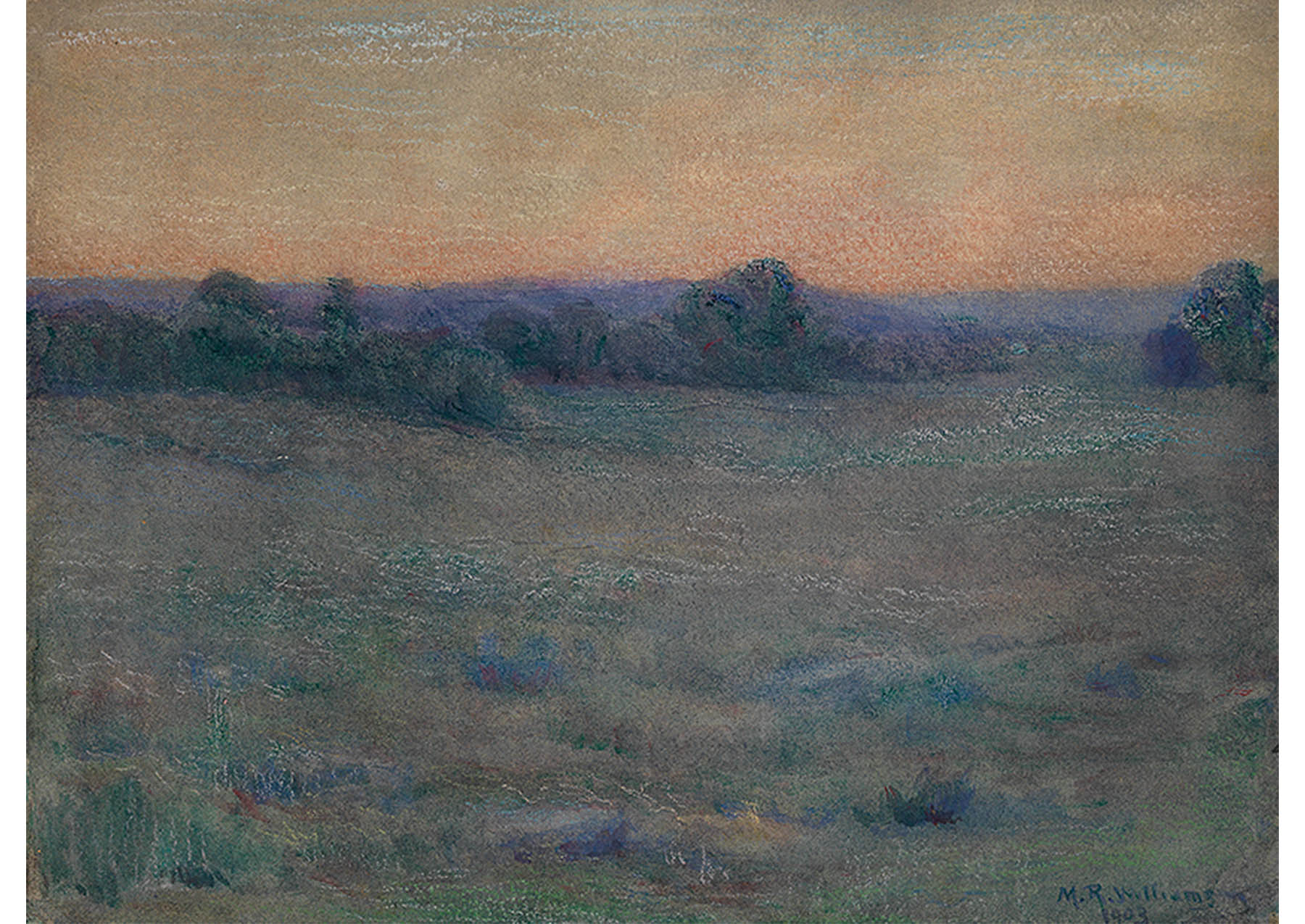
Mary Rogers Williams. American, 1857–1907. Green Landscape - Hills in the Distance, 1903. Pastel and watercolor on heavyweight, textured white paper. Gift of the sisters of Mary Rogers Williams. Photography by Petegorsky/Gipe. SC 1911.3.2.
Despite her strong connections to New England, Mary traveled to Europe nearly every summer. From Norway to Italy and many places in between, she would sketch whatever struck her, which was often local people and natural scenes as she encountered them in her travels. She would attend Catholic masses several times a day, despite her Episcopalian beliefs, and write back home to her sisters about the elaborate music and costumes she observed. Mary brought her Hartford-made bicycle with her for rides into the countryside and seemed to thoroughly experience and enjoy her time abroad. She also spent entire years in Paris where she studied at the Ecole des Beaux-Arts, an influential French art school, and with James Abbott McNeill Whistler, a well-known American artist whose work she admired but personality could not stand. Her time in France was spent in studios and flats along the rue Boissonade and in the company of other artists such as Julia Strong Lyman Dwight, her friend, studio-mate, and Smith alumna.
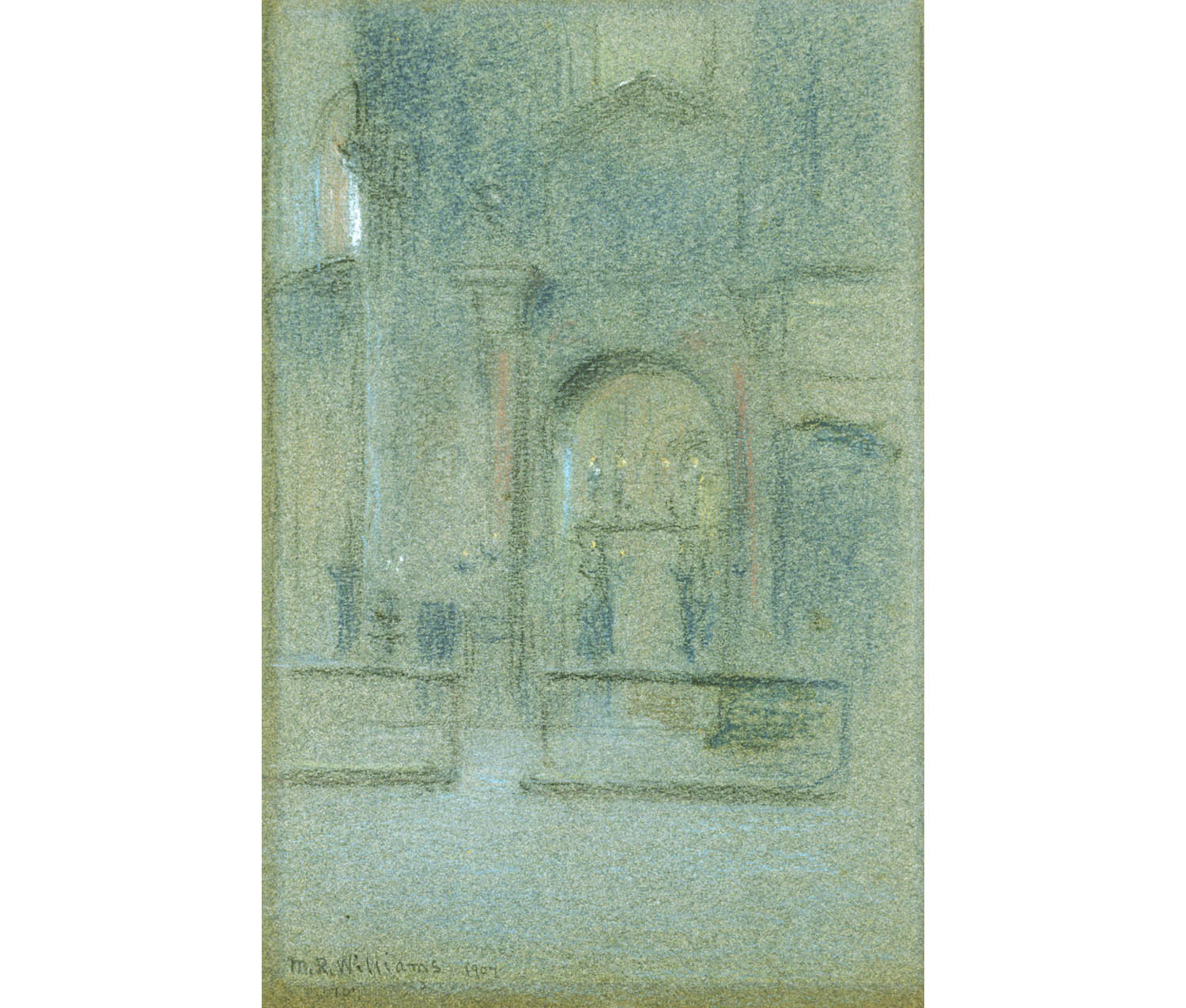
Mary Rogers Williams. American, 1857–1907. In Siena Cathedral, 1907. Pastel on blue paper laid down on paperboard. Gift of the sisters of Mary Rogers Williams. Photography by Petegorsky/Gipe. SC 1911.6.1.
In 1907, while living in Paris, Mary was looked up and visited by the Tyler sisters, Emma and Marian. Emma, another young alumna of Smith, called upon Mary after hearing of her from an artist friend who had admired Mary’s pastels at the American Girls’ Club. Charmed by the young girls and entertained by the hilarious stories of the very comedic Emma, Mary ended up making a pastel sketch of Marian. She considered the end product to be particularly attractive and successful, and hoped to sell it to the mother of the Tyler girls, as she was essentially broke at the time. Ironically, Mrs. Tyler came to Mary’s studio to accept the pastel and the frame it was in as a gift, and quite an awkward encounter ensued. Eventually, Mary made a small copy of Marian’s head to give to the family, and kept the full piece (which made its way to Smith’s collection after her death).
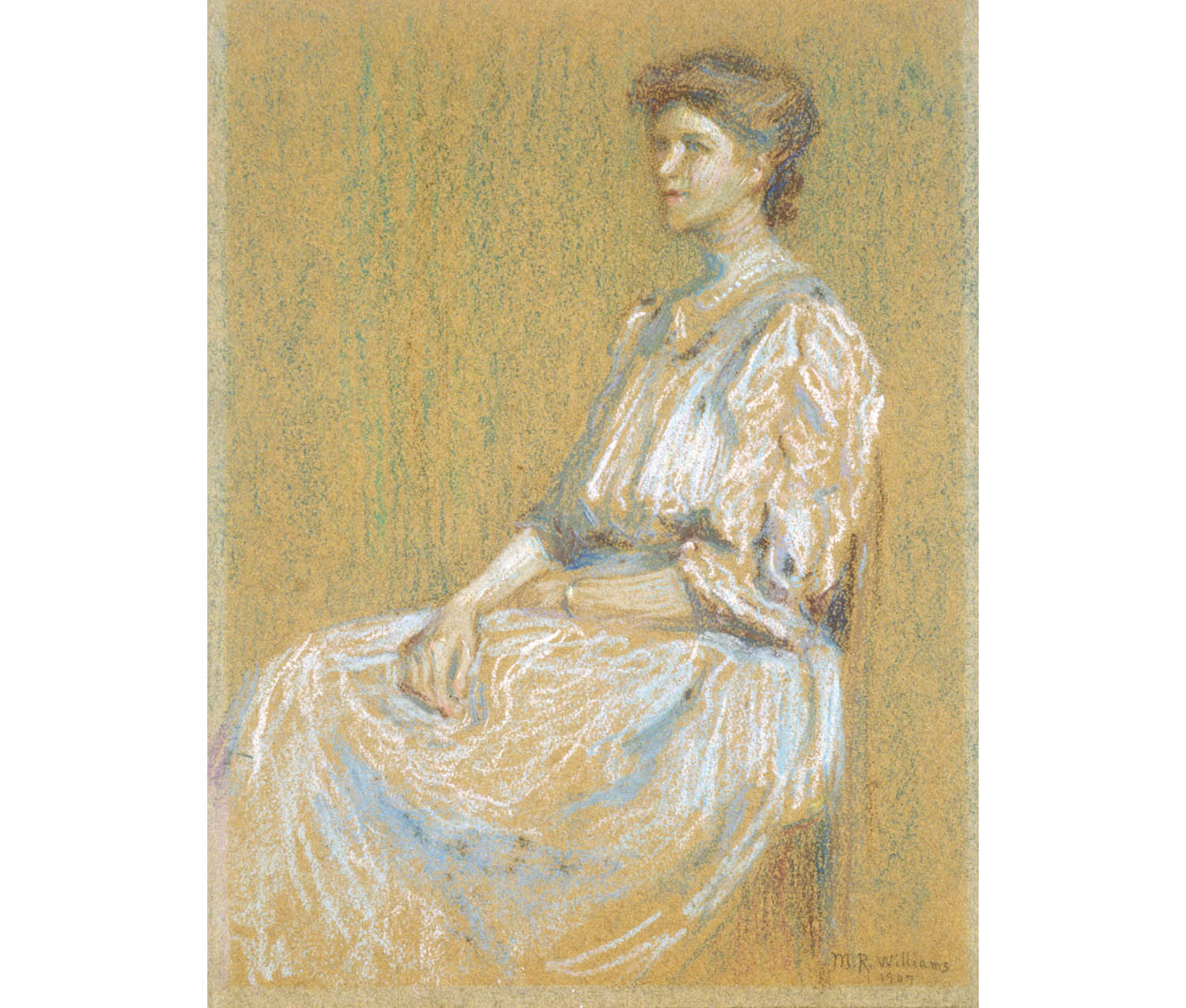
Mary Rogers Williams. American, 1857–1907. Marion Tyler, 1907. Pastel on blue flocked paper laid down on paperboard. Gift of the sisters of Mary Rogers Williams. Photography by Petegorsky/Gipe. SC 1911.7.1.
Mary Rogers Williams died of a sudden illness in 1907 while traveling in Florence, Italy. She left behind a closet full of paintings and drawings in Paris and quite the legacy in the art world. She was lauded in publications such as the Springfield Republicanand theHartford Courantas well as theNew York Timesand numerous art magazines. She was a member of the New York Woman’s Art Club and had exhibited her work in galleries and venues across the nation. Praised by novelist Elizabeth Williams Champney in the Quarterly Illustratoras "an artist with rare poetic instinct and feeling," Mary was clearly a well-known and respected creative individual.
Mary also left behind two sisters to whom she had written a massive daily correspondence while abroad. Upon her death her family and friends inventoried her collection of works. A few made their way to the Smith College Museum of Art as gifts from her sisters. The Cunningham Center houses six pastel drawings by Mary Rogers Williams, one of which is the aforementioned portrait of Marian Tyler. Many of the others are landscapes with vague outlines and forms, which attest to her Impressionist influences. High horizons characterize much of her work, either over towns or over meadows. Much of her work also fits in the American trend of tonalism, and is characterized by a misty, colored atmosphere.
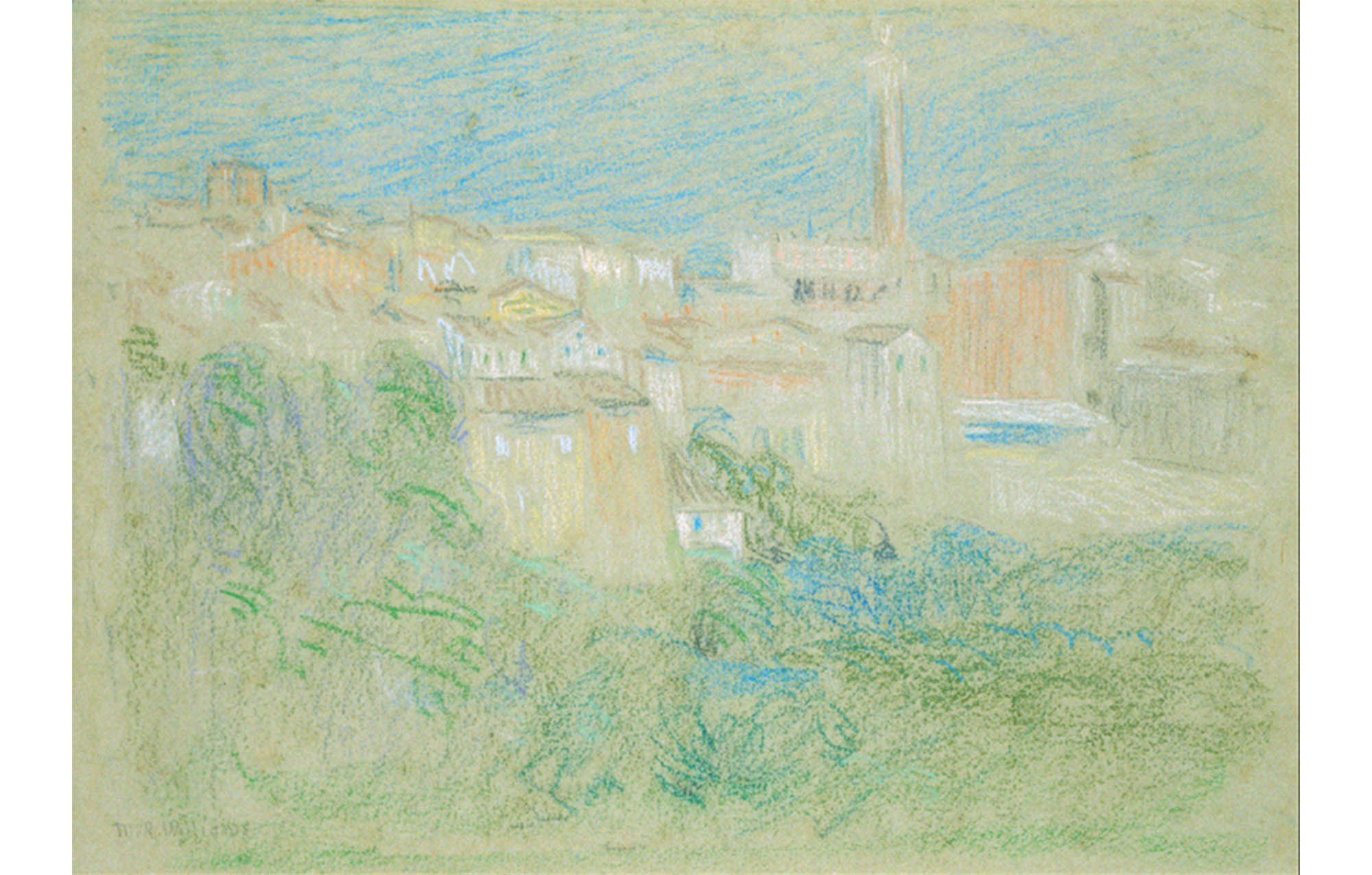
Mary Rogers Williams. American, 1857–1907. Noon Siena, n.d. Pastel on gray wove paper laid down on paperboard. Gift of the sisters of Mary Rogers Williams. Photography by Petegorsky/Gipe. SC 1911.4.1.
However, most remain in private New England collections, such as the 1895 posthumous portrait of Mrs. Mary Smith Tenney, who bequeathed her home, where the Alumna House is now, and considerable funds to Smith College after her death. It used to reside in Tenney House on campus but, at some unknown time, was removed and sold at auction. The auction buyer thought it resembled Whistler's mother, not realizing that the artist had in fact trained with Whistler. He has since sold it to a benefactress who is donating it back to Smith.
Much of the above information came for the extensive research of Eve Kahn, the Antiques columnist at the New York Times, who has been transcribing Mary’s vast correspondence, which is a promised archival gift to Smith College’s Archives. She can be reached at evemkahn@gmail.com.
The Florence Griswold Museum in Old Lyme, Connecticut is having a retrospective of Mary Rogers Williams, her first since 1908, which opens in October 2014.